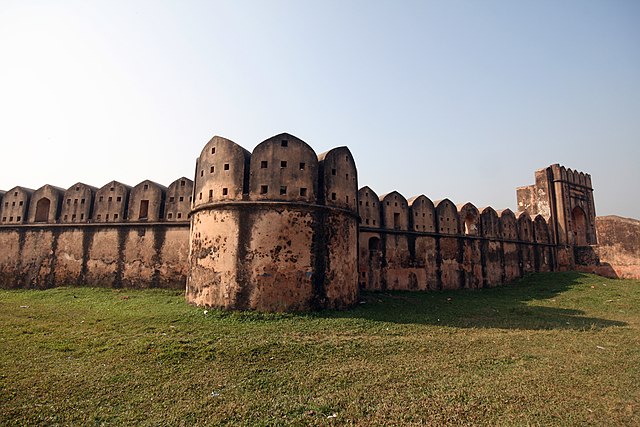The economy of Bangladesh is a major developing market economy. As the second-largest economy in South Asia, Bangladesh's economy is the 35th largest in the world in nominal terms, and 25th largest by purchasing power parity. Bangladesh is seen by various financial institutions as one of the Next Eleven. It has been transitioning from being a frontier market into an emerging market. Bangladesh is a member of the South Asian Free Trade Area and the World Trade Organization. In fiscal year 2021–2022, Bangladesh registered a GDP growth rate of 7.2% after the global pandemic. Bangladesh is one of the fastest growing economies in the world.
Motijheel C/A, the downtown of Dhaka
This African giraffe was imported into Bengal and re-exported to China circa 1415.
The Barkentine Linnet, a ship built in Chittagong, off the coast of Hong Kong circa 1890
Tannery owners with members of the Directorate of Industries, Government of East Bengal in 1949
Bangladesh, officially the People's Republic of Bangladesh, is a country in South Asia. It is the eighth-most populous country in the world and is among the most densely populated countries with a population of nearly 170 million in an area of 148,460 square kilometres (57,320 sq mi). Bangladesh shares land borders with India to the north, west, and east, and Myanmar to the southeast. To the south, it has a coastline along the Bay of Bengal. It is narrowly separated from Bhutan and Nepal by the Siliguri Corridor, and from China by the mountainous Indian state of Sikkim in the north. Dhaka, the capital and largest city, is the nation's political, financial, and cultural centre. Chittagong, the second-largest city, is the busiest port on the Bay of Bengal. The official language of Bangladesh is Bengali while Bangladeshi English is also used in the government and official documents alongside Bengali.
Coin featuring a horseman issued after the Muslim conquest of Bengal.
Chinese manuscript showing an African giraffe gifted to China by the Sultan of Bengal on 20 September 1414.
The Mughals built riverside fortifications with musket holes like in Hajiganj Fort.
The Bibi Mariam Cannon (Lady Mary Cannon) is a large early modern artillery piece which the Mughals used to defend their bases







